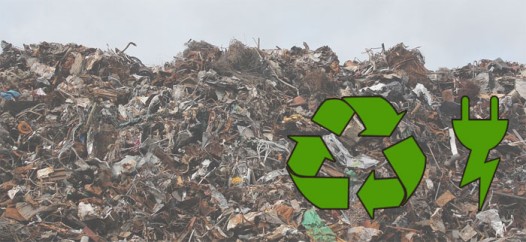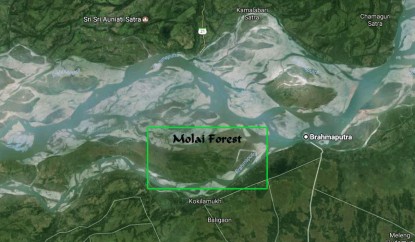
The Earth’s intricate web of life, comprising countless species and ecosystems, is under threat from the escalating crisis of climate change. Climate change, fueled by human activities, is disrupting the delicate balance of nature and posing grave consequences for global biodiversity. In this blog post, we will explore the profound impact of climate change on biodiversity.
Coral Reefs: The Vanishing Underwater Rainforests
Coral reefs, often referred to as the “rainforests of the sea,” are biodiversity hotspots that support an array of marine life. Rising sea temperatures and ocean acidification, driven by climate change, have led to the widespread bleaching and death of coral reefs. The Great Barrier Reef in Australia, the largest coral reef system on Earth, has experienced consecutive mass bleaching events, causing significant damage to its delicate ecosystem.
The consequences of coral bleaching extend far beyond the corals themselves. Coral reefs provide essential habitats, nurseries, and feeding grounds for a staggering diversity of fish, invertebrates, and other marine organisms. The loss of coral reefs disrupts the entire food chain, impacting the abundance and distribution of fish populations and affecting the livelihoods of millions of people who depend on coral reef ecosystems for fishing and tourism.
Furthermore, coral reefs act as natural barriers, protecting coastal communities from storms, wave erosion, and sea-level rise. As corals die and reefs degrade, coastal areas become more vulnerable to the destructive forces of waves and storm surges, exacerbating the risks faced by coastal populations.
Efforts are underway to mitigate the impact of climate change on coral reefs, including reducing carbon emissions and establishing marine protected areas. Additionally, scientists are exploring strategies such as coral restoration and selective breeding of more resilient coral species.
That said, data collected by scientists may not be fully accurate. As Terry Hughes, the director of a coral reef studies center at James Cook University in Australia, noted, “Researchers and monitoring programs often abandon sites that become degraded, or don’t establish new studies there, because nobody wants to study a reef that is covered in silt and algae instead of corals.”[1]

Coral reef affected by bleaching
Polar Regions: Melting Havens for Arctic and Antarctic Wildlife
The polar regions are home to unique and specialized species adapted to the extreme conditions. However, rapid warming in these areas is causing the loss of sea ice, which is crucial for various species, including polar bears, seals, and penguins. As ice melts, it disrupts the food chain, affecting not only the top predators but also the entire ecosystem.
Changes in sea ice extent and distribution are affecting the availability of krill, tiny shrimp-like crustaceans that form the base of the Antarctic food chain. Krill are a vital food source for many Antarctic species, including the iconic Emperor penguins. Reduced sea ice cover and changes in krill populations can lead to food scarcity and affect the reproductive success of these species, ultimately impacting the entire Antarctic ecosystem.
The melting of ice in the polar regions also contributes to rising sea levels, further exacerbating the vulnerability of coastal areas worldwide. As ice sheets in Greenland and Antarctica melt, vast amounts of freshwater are added to the oceans, contributing to global sea-level rise. This poses a significant threat to low-lying coastal communities and ecosystems, including wetlands and estuaries.

Rainforests: The Lungs of the Earth Under Siege
Tropical rainforests harbor an astounding array of plant and animal life, making them the most biodiverse ecosystems on the planet. However, deforestation, exacerbated by climate change-induced droughts and fires, is fragmenting and degrading these vital habitats. The Amazon rainforest, for instance, has faced unprecedented deforestation rates, leading to the loss of countless species and releasing substantial amounts of carbon dioxide into the atmosphere.
According to a study, the Amazon rainforest is emitting more carbon dioxide than it is able to absorb. Luciana Gatti, the research lead at the National Institute for Space Research in Brazil, said: “The first very bad news is that forest burning produces around three times more CO2 than the forest absorbs. The second bad news is that the places where deforestation is 30% or more show carbon emissions 10 times higher than where deforestation is lower than 20%.”[2]
The consequences of deforestation and climate change in the Amazon rainforest are devastating. As vast tracts of forest are cleared, countless species lose their habitats and face the risk of extinction. The Amazon is home to an estimated 10% of the world’s known species, including iconic creatures like jaguars, sloths, and macaws. The loss of rainforest cover disrupts the intricate web of interactions among species, affecting not only the animals but also the plants, insects, and microorganisms that rely on intact ecosystem.

Amazon fires
Migratory Species: Losing Their Way
Climate change disrupts the intricate cues and patterns that guide migratory species, affecting their breeding, feeding, and survival. The bar-tailed godwit, a migratory bird, embarks on an annual 7,000-mile journey from Alaska to New Zealand. However, as the warming Arctic alters their food availability, some birds are struggling to complete their arduous migration.
Dr. VojtÄch Kubelka, the leading author and former Visiting Researcher at the University of Bath’s Milner Centre for Evolution, says, “We have lived with the notion that northern breeding grounds represent safe harbors for migratory animals. On the contrary, numerous Arctic and North temperate sites may now represent ecological traps or even worse degraded environments for diverse migratory animals, including shorebirds, caribou or butterflies.”[3]
Migratory fish species, such as salmon, are also impacted by climate change. These fish navigate complex river systems to spawn in specific locations, relying on water temperature, flow patterns, and food availability. As water temperatures increase, it can disrupt the timing and success of salmon migrations. Additionally, altered precipitation patterns and water scarcity can lead to reduced river flows, impeding the ability of fish to reach their spawning grounds.
Insects, such as monarch butterflies, undertake impressive multi-generational migrations. Climate change affects the availability of nectar-rich flowers along their migration routes and alters the timing of breeding and hatching. These changes can disrupt the synchronized relationship between the butterflies and their host plants, threatening their survival.
Alpine Ecosystems: Precarious Life at the Summit
Mountainous regions, characterized by unique alpine ecosystems, are experiencing amplified warming compared to lowland areas. As temperatures rise, plant and animal species are forced to move upward to higher elevations to escape the heat. However, the limited space at the summit of mountains leaves them with nowhere to go, leading to local extinctions and loss of biodiversity.
The American pika, a small herbivorous mammal, inhabits alpine regions across North America. Pikas rely on cool, moist microhabitats created by deep snowpack, which insulate them from extreme cold and provide a stable environment. As snowpack decreases due to climate change, pikas are losing their suitable habitats and are forced to move to higher elevations to find suitable conditions. However, this upward migration has its limits, and pikas are running out of available habitat, pushing them closer to the risk of extinction.
Alpine plants, such as cushion plants and alpine grasses, play a crucial role in stabilizing slopes, regulating water flow, and providing habitat and food for other species. The disappearance of these plant communities can lead to increased soil erosion, altered hydrological patterns, and a decline in biodiversity throughout the alpine ecosystem.
Additionally, warming temperatures can facilitate the spread of diseases that affect alpine species. For example, the chytrid fungus has been linked to the decline of amphibian populations worldwide. In alpine regions, warming temperatures can increase the prevalence of the fungus, posing a significant threat to alpine amphibians already facing habitat loss and other climate-related challenges.

The American pika
Wrapping Up
Addressing the challenges posed by climate change and biodiversity loss requires global collaboration. International agreements, such as the Convention on Biological Diversity (CBD) and the Paris Agreement, play crucial roles in promoting biodiversity conservation and climate change mitigation. Effective policies and actions at local, national, and international levels are essential for reducing greenhouse gas emissions, conserving habitats, and supporting sustainable development.
While the future of biodiversity in an era of climate change is uncertain, there is still hope. By taking urgent and comprehensive action to mitigate climate change, protect habitats, and promote sustainable practices, we can increase the resilience of ecosystems and help safeguard the incredible diversity of life on our planet. It is a collective responsibility to act now to secure a more sustainable and biodiverse future.
Sources
[1]Catrin Einhorn, “Climate Change Is Devastating Coral Reefs Worldwide, Major Report Says” (The New York Times, Oct 4, 2021).[⇑]
[2]Damian Carrington, “Amazon rainforest now emitting more CO2 than it absorbs,” (The Guardian, 14 Jul, 2021). [⇑]
[3]Vicky Just, “Climate change and human pressure mean migration may be ’no longer worth it,’ say researchers” (Phys.org, Oct 18, 2021). [⇑]
Related Posts

Dump Your Garbage in Sweden, Get Paid!
How the Nation’s Pioneering Waste Disposal System Has Run Out of Waste In the new worl
View More
This Indian Reforestation Hero Planted a Jungle, Alone
Meet Jadav Molai Payeng of Assam’s Molai Forest In a world where trees were being rapi
View More
Toward a Gandhian Philosophy of Sustainable Development and Environmental Conservation
Mahatma Gandhi as Environmentalist and Sustainability Precursor Save Save Save
View More



